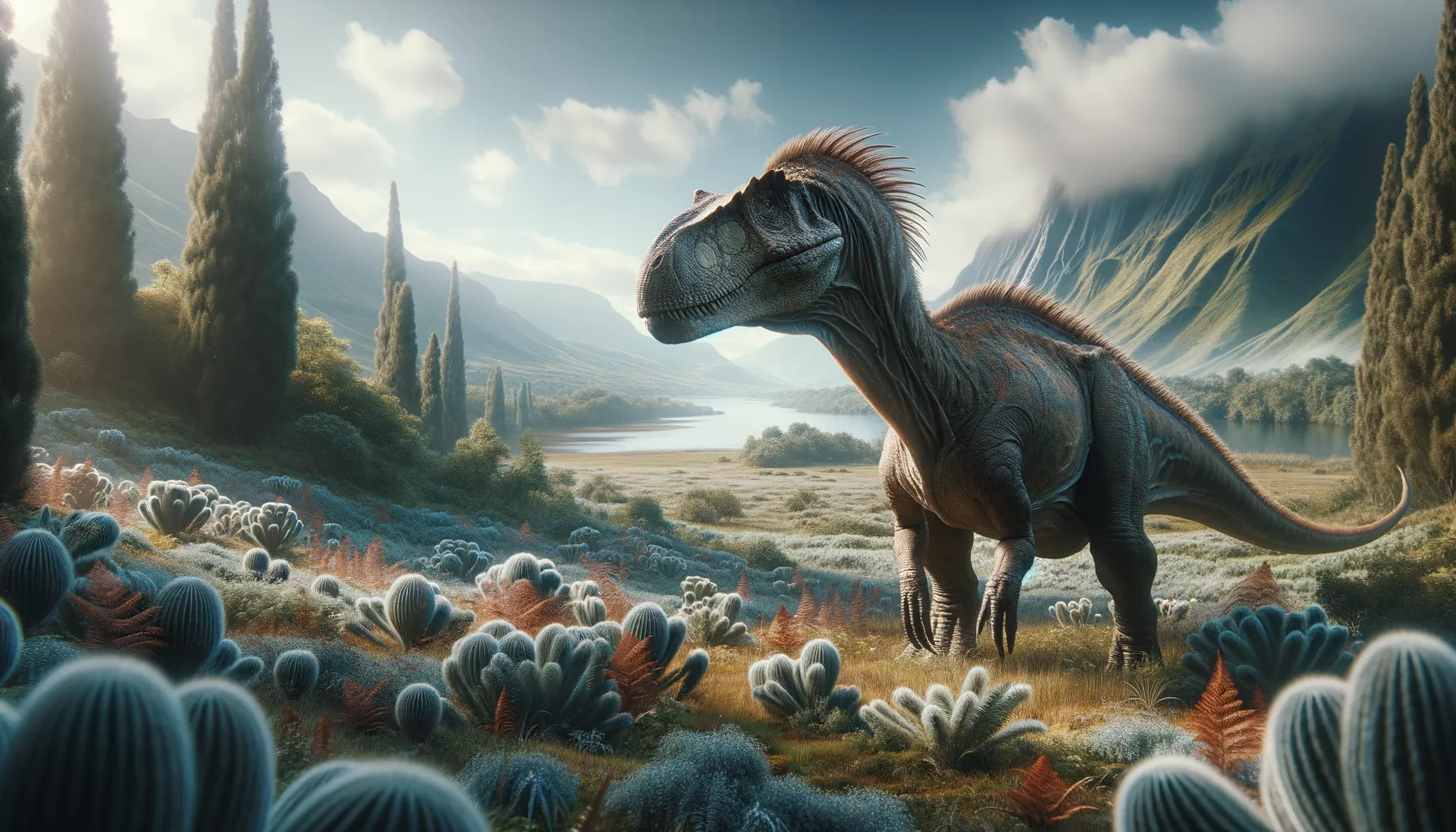
Turiasaurus
A gentle giant from the European past.
Period
Jurassic
Length
Could reach up to 30 meters in length.
Height
Estimated to be about 10 meters tall.
Weight
Weighed around 40 tons.
Turiasaurus was one of the largest dinosaurs that roamed Europe during the Late Jurassic period. Its immense size and weight made it a dominant herbivore in its ecosystem. Fossils of Turiasaurus provide valuable insight into the diversity of dinosaur species on the European continent. This giant dinosaur's discovery highlights the vast, untapped paleontological potential present in regions beyond North America and Asia.
Diet
Turiasaurus was an herbivore, primarily feeding on a variety of plants. Its large size allowed it to reach high vegetation that smaller herbivores could not access. The dinosaur's strong teeth were adapted for masticating tough plant material.
Hunting
As a herbivore, Turiasaurus did not hunt for prey. Instead, it would have spent its days foraging for various plant materials in its natural habitat. Its large size offered protection against potential predators.
Environmental challenges
Turiasaurus faced challenges such as fluctuating climates and environmental changes that could affect plant availability. Seasonal changes would have required migration to areas with abundant vegetation. Competition with other large herbivores could have been a challenge for accessing food resources in its ecosystem.
Speed
Slow-moving due to its massive size.
Lifespan
Estimated to be several decades.
First discovery
Discovered in Spain in 2006.
Fun Facts
- Turiasaurus is one of the largest dinosaurs ever discovered in Europe, specifically in Spain.
- It lived during the Late Jurassic period, about 150 million years ago.
- Turiasaurus is estimated to have been around 30 to 36 meters long, making it a true giant.
- The name 'Turiasaurus' comes from the Turia region in Spain where its fossils were found.
- Despite its enormous size, Turiasaurus was a herbivore, feeding primarily on plants.
- Its enormous size likely helped it deter predators and reach high vegetation.
- Turiasaurus is part of a group of dinosaurs known as sauropods, recognizable by their long necks and tails.
Growth and Development
Turiasaurus hatched from eggs like other dinosaurs, experiencing rapid growth in its early years. As it matured, its growth rate would slow, eventually reaching its immense adult size. The growth process required substantial nutritional intake for developing strong bones and a robust body.
Habitat
Turiasaurus lived in a lush, forested environment with access to ample vegetation. Rivers and water sources were essential for sustaining such a large creature. The habitat offered various plant species to support its herbivorous diet.
Interaction with other species
Turiasaurus co-existed with other dinosaur species, sharing resources in its habitat. Its size likely discouraged most predators from attempting an attack. It may have competed for food with other large herbivores, while smaller dinosaurs might have lived symbiotically around it, feeding on leftovers.
Natural lifespan
Turiasaurus likely had a lifespan similar to other large dinosaurs, living several decades.
Reproduction
Reproduction was through egg-laying, with females likely nesting in secure locations. Eggs were cared for until they hatched, and young Turiasaurus would need protection in their early stages. Adults possibly guarded nests to increase hatchling survival rates.
Social behaviour
Turiasaurus may have lived in small groups or herds for protection and social interaction. Group living allowed for cooperative defense against predators. Social structures would likely include dominance hierarchies, with larger individuals leading the group.
Fossil locations
Fossils of Turiasaurus have been primarily found in Spain. These discoveries provide essential insights into the diversity of European dinosaur species. The initial discovery of Turiasaurus fossils has prompted further exploration of the region for similar finds.
